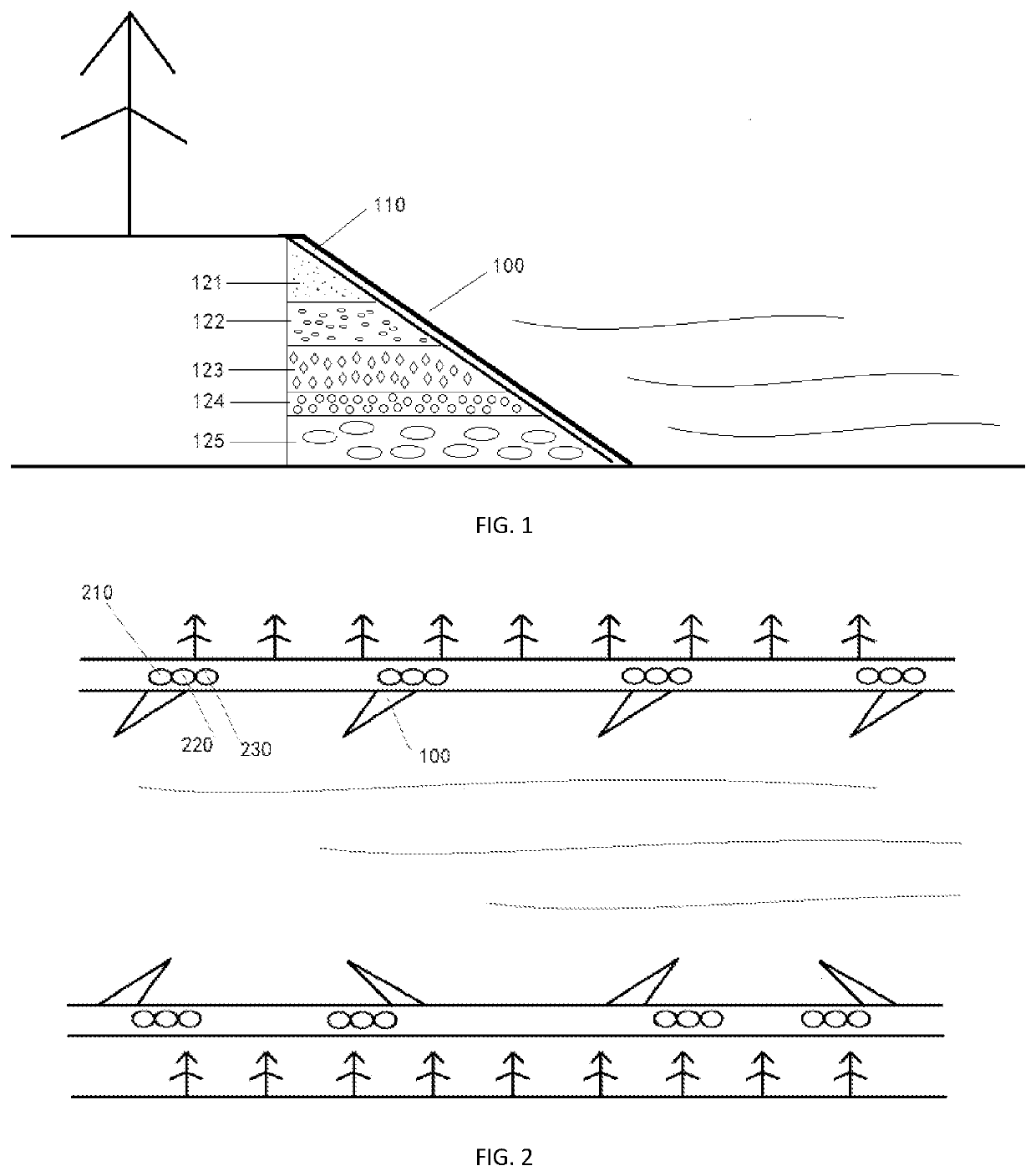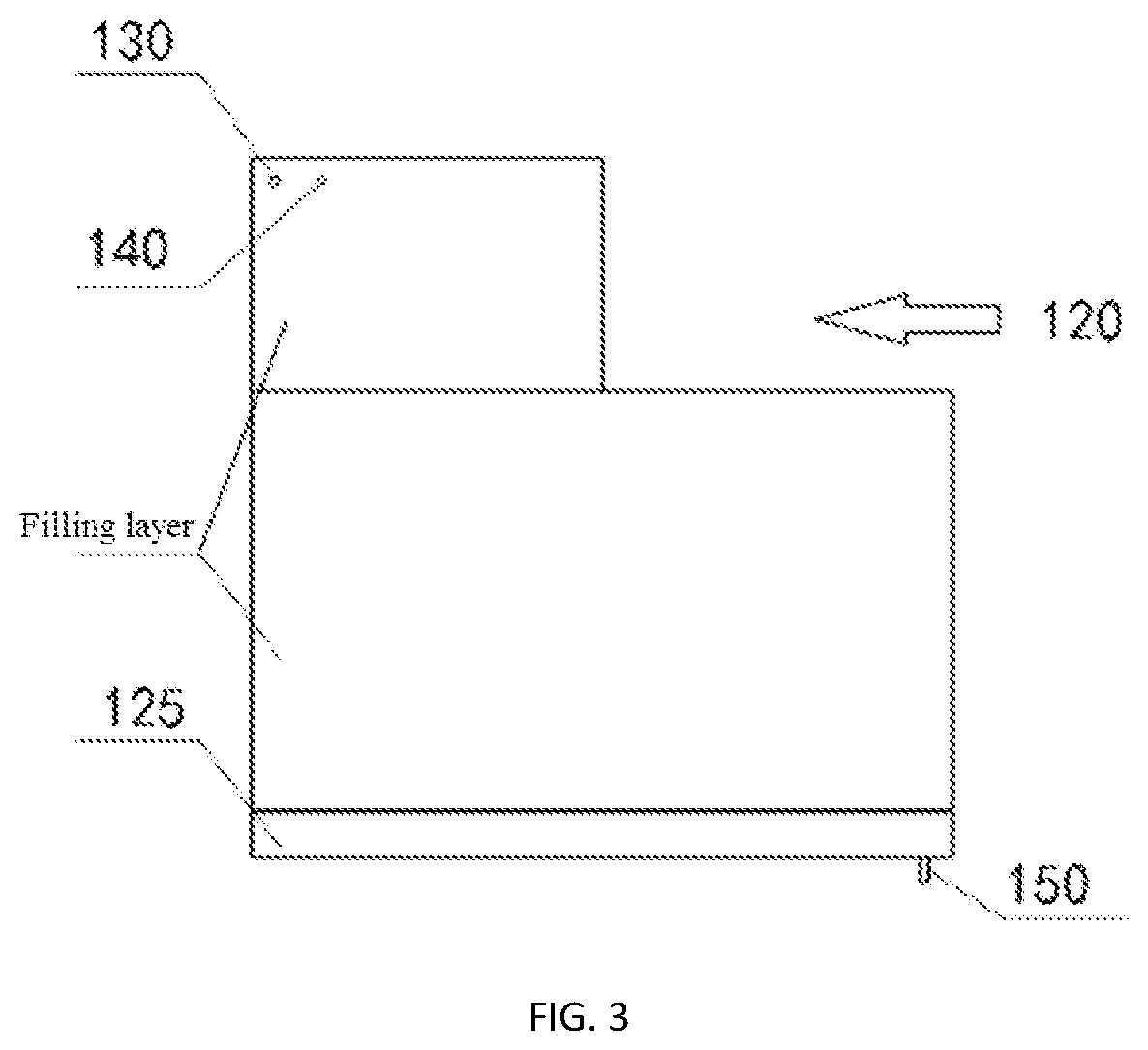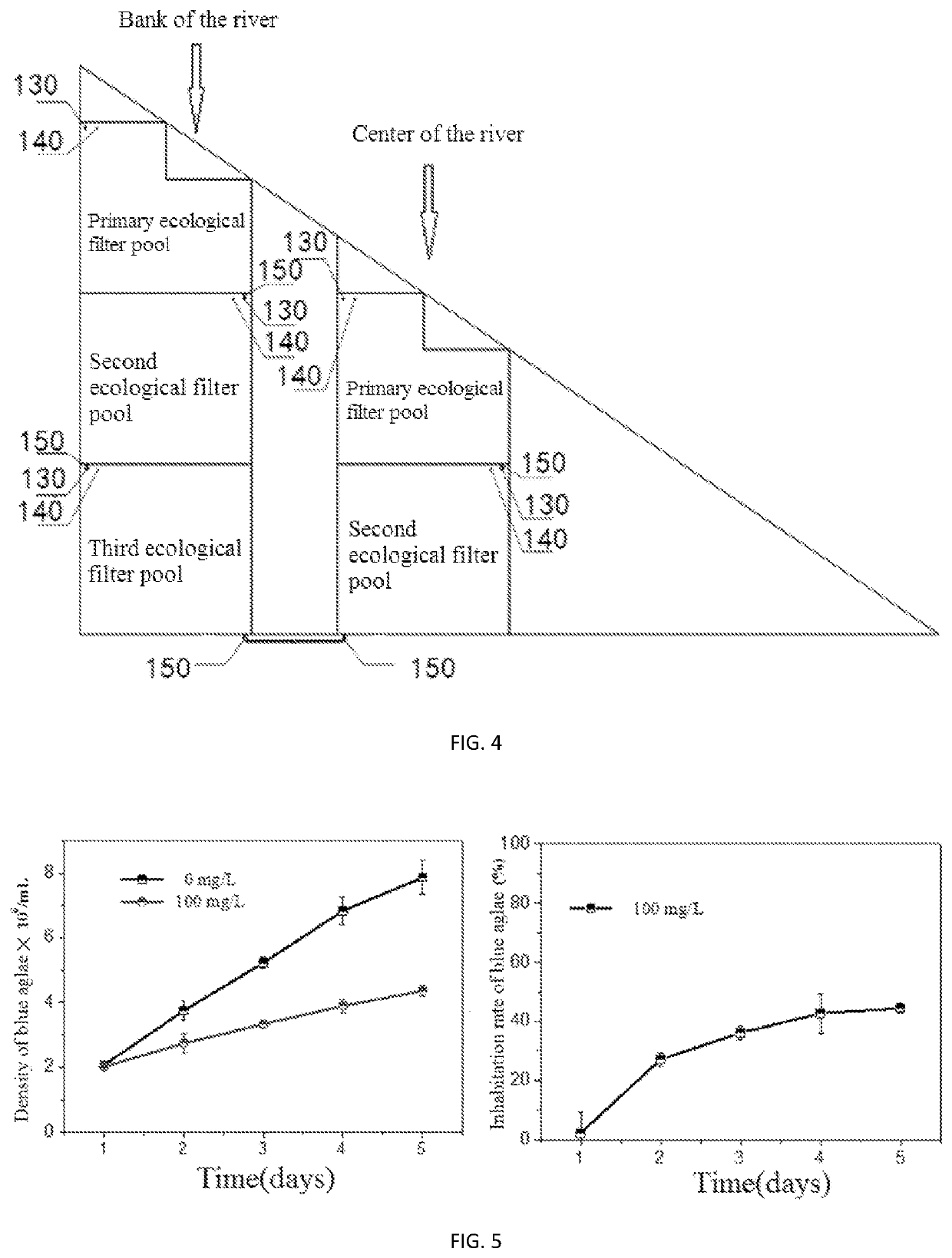Method for controlling growth of blue algae in water area by utilizing eucalyptus
a technology of eucalyptus and blue algae, applied in the direction of biological water/sewage treatment, specific water treatment objectives, sustainable biological treatment, etc., can solve the problem of blue algae outbreak that cannot be solved fundamentally, endanger human health, damage the ecological landscape of water areas, etc. problem, to achieve the effect of improving the water permeability of soil, reducing the occupation of land resources, and good treatment effect on non-point source pollution
- Summary
- Abstract
- Description
- Claims
- Application Information
AI Technical Summary
Benefits of technology
Problems solved by technology
Method used
Image
Examples
experimental examples
Experimental Example 1
[0122]The eucalyptus extract was prepared as follows:
[0123](1) cutting the eucalyptus leaves into small pieces;
[0124](2) drying the eucalyptus leaves in an oven at 40° C. to a constant weight;
[0125](3) crushing the dried eucalyptus leaves with a pulverizer until the diameter of the powder was less than 200 mesh;
[0126](4) putting the powder into water at a ratio of 1 g / 40 mL for extraction;
[0127](5) ultrasonic dispersing for 30 min every 24 hours for a total period of 7 days;
[0128](6) filtering with gauze to obtain the eucalyptus leaf extract.
[0129]The performance of the eucalyptus extract to inhibit algae was detected as described below. 100 mL BG-11 medium and 1 mL logarithmic growth phase blue algae were added into a 250 mL Erlenmeyer flask. After the added blue algae acclimatizated in the new culture medium for two days, 0.4 mL of 25 g / L extract was then added thereto to make the concentration of the extract in the algae solution reach 100 mg (dry weight of ...
experimental example 2
[0131]Eucalyptus seedlings (Guangan No. 29) were purchased from Guangxi Province of China, and the seedlings were about 30 cm long. The same two experiment devices containing 4 L of BG11 culture medium were prepared, and then blue aglae was added into one device, and both blue aglae and eucalyptus were added into the other device, respectively. From the beginning of the experiment, the density of blue aglae, soluble organic phosphorus SPR (ultraviolet spectrophotometry), and nitrate nitrogen NO3−N (ultraviolet spectrophotometry) after 1, 3, 6, 9 and 12 days of culture were monitored. The experiment results were shown in FIG. 7.
[0132]It can be seen from FIG. 7 that eucalyptus seedlings can secrete allelochemicals that inhibit the growth of cyanobacteria and can quickly absorb nutrients such as nitrogen and phosphorus in water. From the third day, the density of blue aglae in the blue aglae+eucalyptus seedling sample decreased rapidly until it was below the detection limit. It shows t...
PUM
| Property | Measurement | Unit |
|---|---|---|
| dry weight | aaaaa | aaaaa |
| dry weight | aaaaa | aaaaa |
| size | aaaaa | aaaaa |
Abstract
Description
Claims
Application Information
 Login to View More
Login to View More - R&D
- Intellectual Property
- Life Sciences
- Materials
- Tech Scout
- Unparalleled Data Quality
- Higher Quality Content
- 60% Fewer Hallucinations
Browse by: Latest US Patents, China's latest patents, Technical Efficacy Thesaurus, Application Domain, Technology Topic, Popular Technical Reports.
© 2025 PatSnap. All rights reserved.Legal|Privacy policy|Modern Slavery Act Transparency Statement|Sitemap|About US| Contact US: help@patsnap.com



